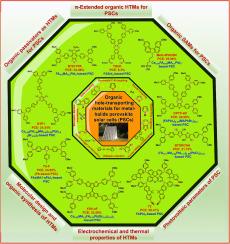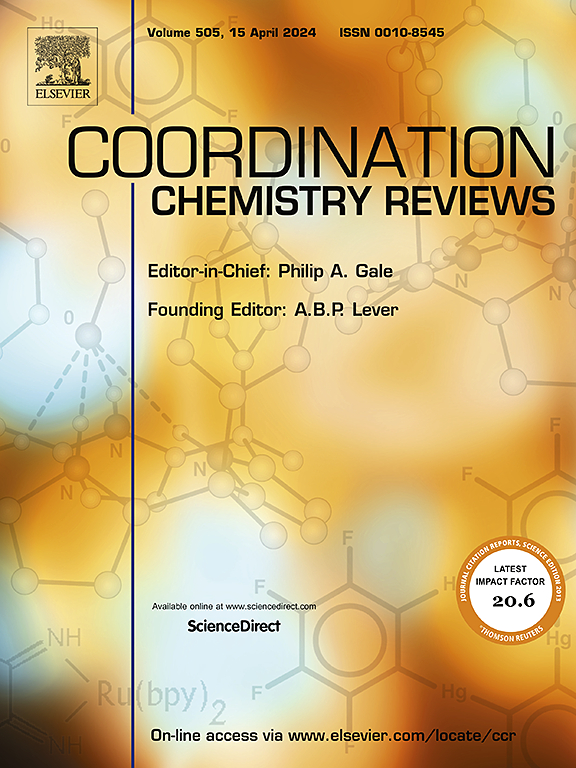Heterocyclic and heteropolycyclic moieties in organic hole transport materials for perovskite solar cells: Design, synthesis, and performance
IF 20.3
1区 化学
Q1 CHEMISTRY, INORGANIC & NUCLEAR
引用次数: 0
Abstract
This review focuses on the pivotal role of heterocyclic and heteropolycyclic moieties in the development of organic hole-transporting materials (HTMs) for application in perovskite solar cells (PSCs). The escalating demand for sustainable energy sources has heightened interest in PSCs due to their exceptional efficiency and low-cost manufacturing potential. In this review, we highlight the importance of organic-HTMs in PSCs, detailing their innovative molecular design, synthesis, thermal and electrochemical properties, and influence on photovoltaic parameters. The synthesis of heteroatom substituted organic-HTMs from readily available precursors is systematically presented, highlighting key C-N/C-C bond-forming reactions including Buchwald-Hartwig amination, Suzuki, Stille, and Glaser-Hay couplings, as well as Knoevenagel and Horner−Wittig condensations, and Arbuzov reaction. We emphasize the significance of organic synthetic chemistry in designing HTMs with desirable characteristics, such as enhanced solubility, ease of synthesis, simple purification, and characterization by modern analytical techniques. Additionally, the review explores how organic chemistry can enhance critical parameters of HTMs, including energy level alignment, thermal stability, hydrophobicity, hole mobility, and defect passivation ability. Overall, this review describes various organic-HTMs, such as highly π-extended organic molecules, organic passivators, and organic self-assembled monolayers, as emerging HTMs for lead- and tin-based PSCs. To gain insights into the molecular structure, single crystal structures of potential organic-HTMs for PSCs are discussed. In addition, hole-transporting organic passivators playing a role in suppressing the formation of metallic lead (Pb0) on the perovskite surface are highlighted. Future directions of PSC research are discussed, highlighting the potential for further advancements in organic-HTM design and synthesis to drive improvements in PSC performance. Overall, this review is a valuable resource for researchers in the field, offering insights into recent advances and guiding future research endeavors.


求助全文
约1分钟内获得全文
求助全文
来源期刊

Coordination Chemistry Reviews
化学-无机化学与核化学
CiteScore
34.30
自引率
5.30%
发文量
457
审稿时长
54 days
期刊介绍:
Coordination Chemistry Reviews offers rapid publication of review articles on current and significant topics in coordination chemistry, encompassing organometallic, supramolecular, theoretical, and bioinorganic chemistry. It also covers catalysis, materials chemistry, and metal-organic frameworks from a coordination chemistry perspective. Reviews summarize recent developments or discuss specific techniques, welcoming contributions from both established and emerging researchers.
The journal releases special issues on timely subjects, including those featuring contributions from specific regions or conferences. Occasional full-length book articles are also featured. Additionally, special volumes cover annual reviews of main group chemistry, transition metal group chemistry, and organometallic chemistry. These comprehensive reviews are vital resources for those engaged in coordination chemistry, further establishing Coordination Chemistry Reviews as a hub for insightful surveys in inorganic and physical inorganic chemistry.
 求助内容:
求助内容: 应助结果提醒方式:
应助结果提醒方式:


